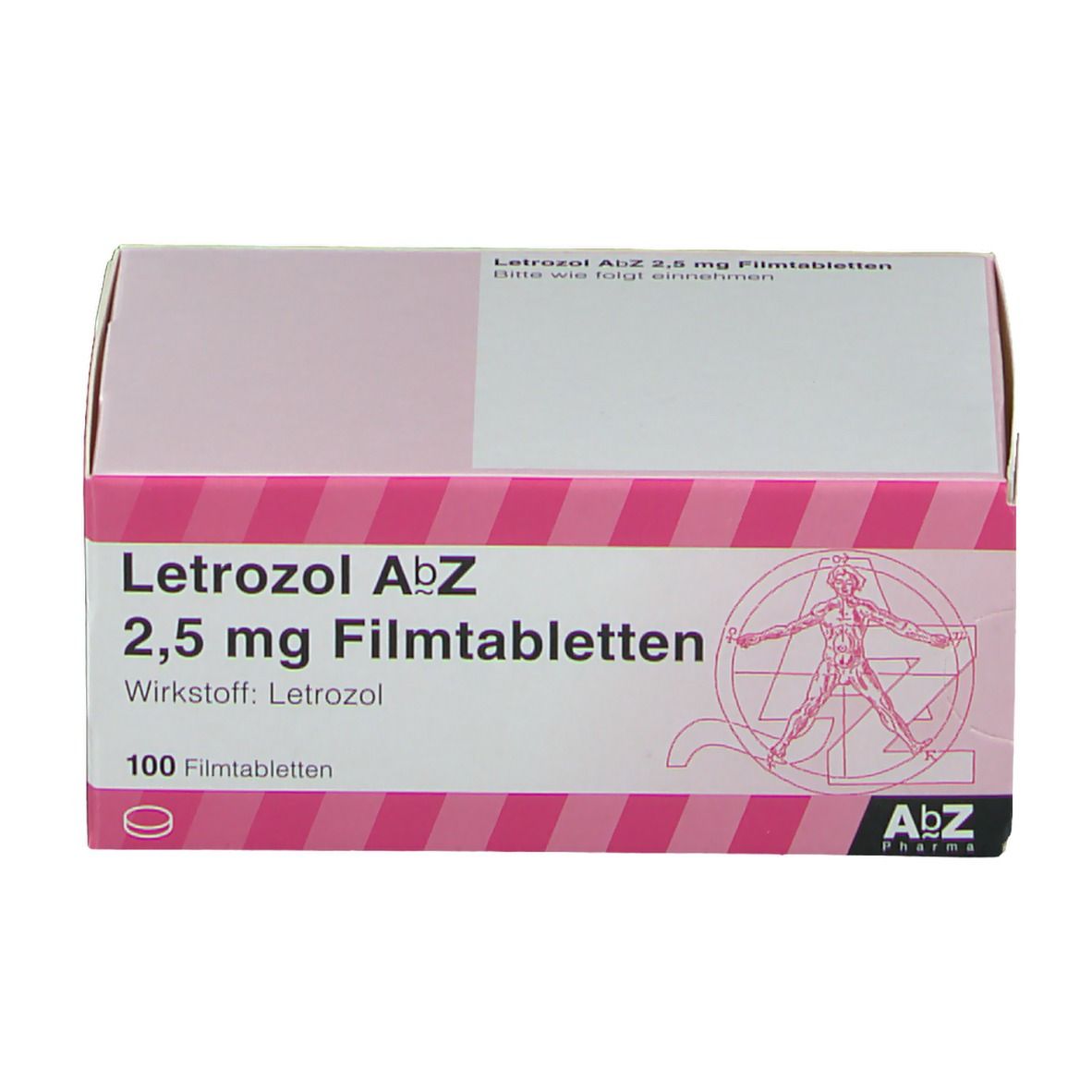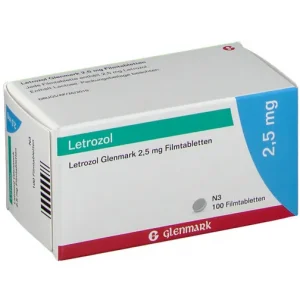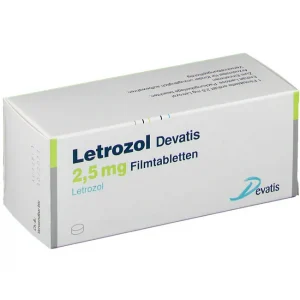Description
Interactions with other drugs
No clinically significant interactions are observed when letrozole is used concomitantly with cimetidine and warfarin.
Clinical experience regarding the use of letrozole in combination with other anticancer drugs is currently not available.
According to in vitro studies, letrozole inhibits the activity of the CYP2A6 and CYP2C19 isoenzymes (the latter to a moderate extent). In deciding the clinical relevance of these data, it should be taken into account that the CYP2A6 isoenzyme does not play an important role in the metabolism of the drug. Experimental in vitro studies have shown that letrozole at concentrations 100 times higher than Css in plasma has no ability to significantly inhibit the metabolism of diazepam (a substrate of the CYP2C19 isoenzyme). Therefore, a clinically relevant interaction due to effects on CYP2C19 isoenzyme activity is unlikely. Nevertheless, caution should be exercised when co-administering letrozole with drugs primarily metabolised with these isoenzymes and with a narrow therapeutic index.
Composition
Composition per tablet: active substance: letrozole 2.50 mg
Undesirable effects
- As a rule, adverse effects were mild to moderately severe and mainly related to inhibition of oestrogen synthesis.
- Determination of the incidence of adverse reactions: very common (>10%), common (1-10%), uncommon (0.1-1%), rare (0.01-0.1%), very rare (<0.01%), including single reports.
- Gastrointestinal system: frequently – nausea, vomiting, indigestion, constipation, diarrhoea; occasionally – abdominal pain, stomatitis, dry mouth, increased liver enzymes.
- Nervous system disorders: often – headache, dizziness, depression; sometimes – restlessness, nervousness, irritability, somnolence, insomnia, memory impairment, dysesthesia, paresthesia, hypoesthesia, episodes of cerebral circulatory disorders.
- Haematopoiesis: sometimes – leukopenia.
- Cardiovascular system: sometimes – palpitations, tachycardia, superficial and deep thrombophlebitis, raised blood pressure, coronary artery disease (angina, myocardial infarction, heart failure), thromboembolism; rarely – pulmonary embolism, arterial thrombosis, stroke.
- Respiratory system: sometimes – dyspnoea, cough.
- Dermatological reactions: frequently – alopecia, increased sweating, skin rash (including erythematous, maculopapular, vesicular, psoriasis-like rash); occasionally – pruritus, dry skin, urticaria; very rarely – angioedema, anaphylactic reactions.
- Musculoskeletal system: very common – joint pain; common – muscle pain, bone pain, osteoporosis, bone fractures, sometimes – arthritis.
- Sensory organs: sometimes – cataracts, eye irritation, blurred vision, taste disturbance.
- Urinary system: sometimes – increased urination, urinary tract infections.
- Reproductive system: sometimes – vaginal bleeding, vaginal discharge, vaginal dryness, mammary gland pain.
- Metabolism: often – increased weight, hypercholesterolaemia, anorexia, increased appetite; sometimes – decreased weight, thirst.
- Other: very common – hot flashes (hot flashes); common – increased fatigue, asthenia, malaise, peripheral oedema; sometimes – hyperthermia (fever), dry mucous membranes, generalised oedema, pain in tumour foci.






Reviews
There are no reviews yet.